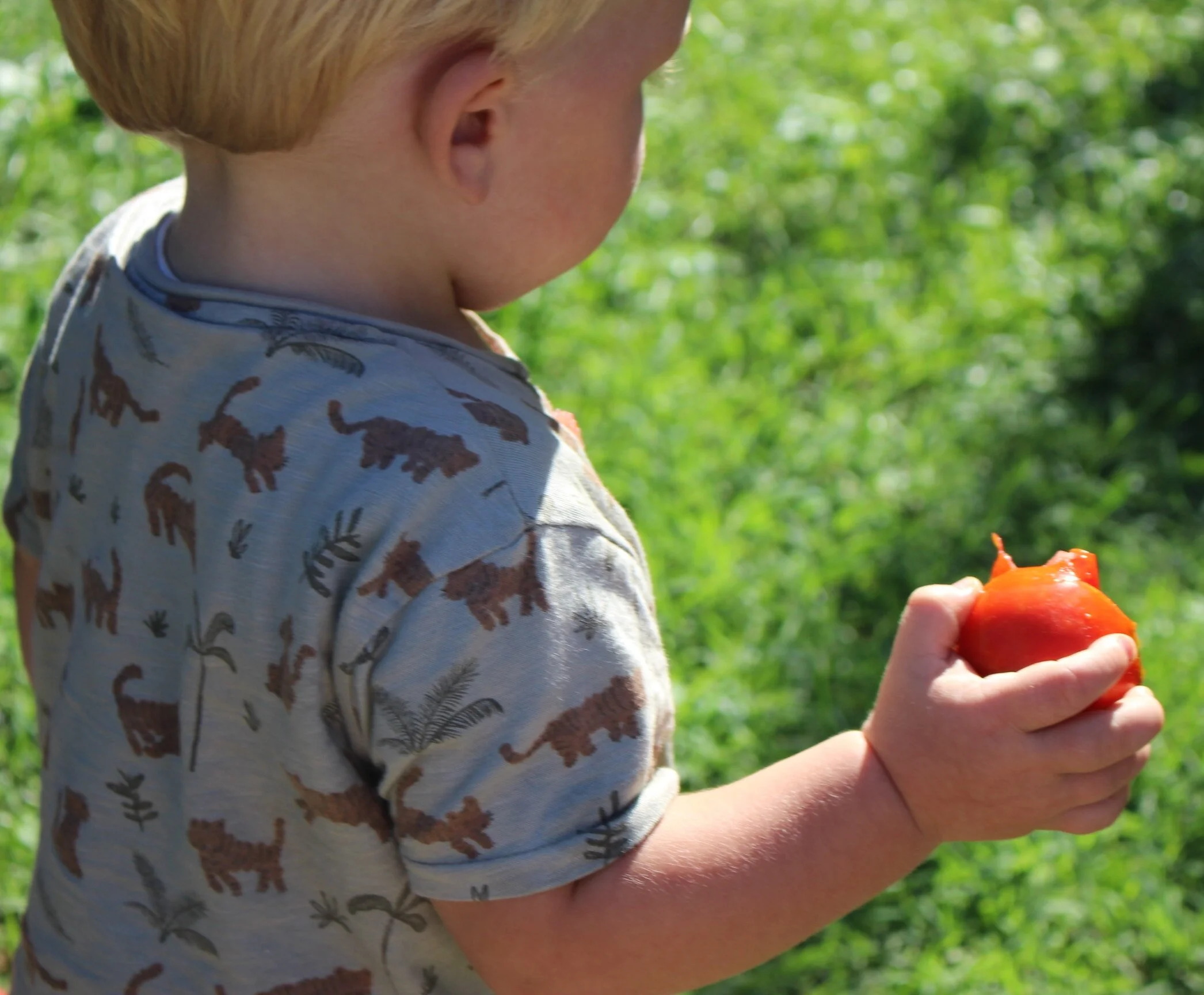Homegrown + Early Years =
Good Health & Wellbeing for a Lifetime
Keeping in good health today has never been more difficult. People in industrialized countries are presented with an endless array of processed, packaged and scentless products, forcing us to rely on the expert knowledge of food manufacturers, labelers and processors in our dietary choices. The Garden Project guides children into making healthy food choices through the growth of plants as a central design element of the project. It is widely known, that children are more likely to eat more fruits and vegetables if they grow it themselves. In a study run by Debra Haire-Joshu in 2007, findings were simple and clear: preschool children in rural areas eat more fruits and vegetables when the produce is homegrown as it creates “a ‘positive food environment.’”
Eating the Colors of the Rainbow. The Garden Project draws a parallel between brightly colored fruit and vegetables with their highly nutritional values. Unit 4 teaches students that all fruit and vegetables can be categorized into 5 color groups: red, orange/yellow, green, white/brown and purple/ blue, exploring some of the nutritional substances that give these colors to our fruit and vegetables. Children are given cues on how to eat a combination of these colors on a daily basis, which is fundamental for keeping a balanced diet and making healthy eating choices.

